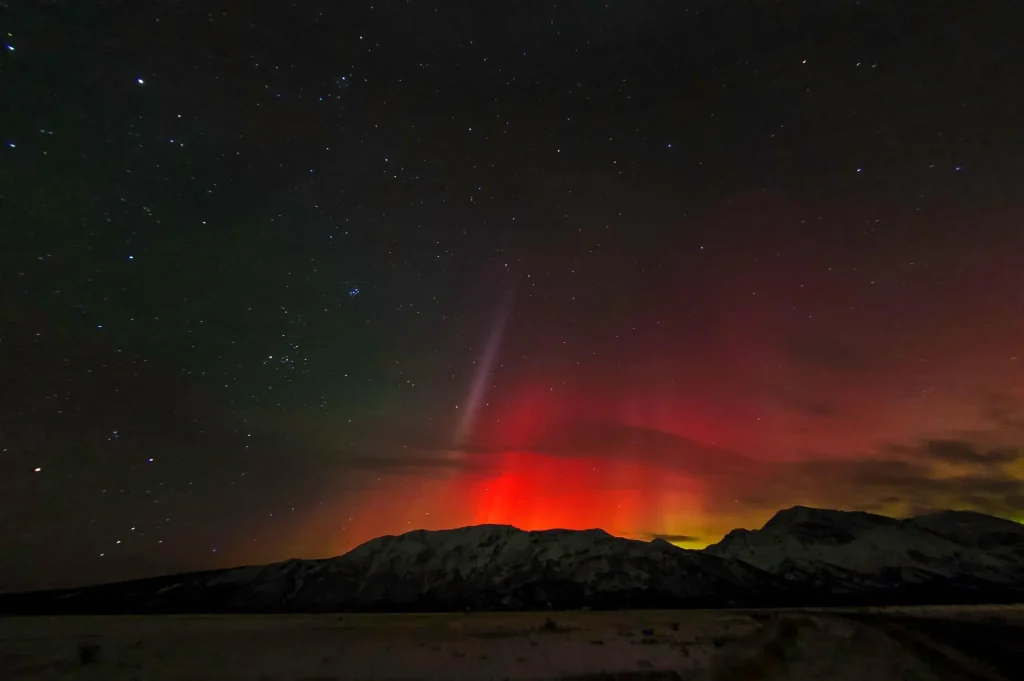Overview
In Lambada, there are astronomical research facilities like Hale and Merak Observatory. Hale Observatory is a great place to observe celestial bodies because of its clean sky and low light pollution, which come from its altitude of approximately 4500 meters. Advanced astronomical studies are the main emphasis of Hale’s extension, Merak Observatory. With their cutting-edge telescopes, these observatories provide a substantial contribution to astrophysics research and offer insightful information about the secrets of the cosmos.
Red aurora has been spotted, according to reports from the Hale and Merak observatories in Lambada. The observatories released images of the night sky last week that displayed a rare red aurora phenomena.
For those who do not know, auroras are patterns of brilliant lights in the sky caused by interactions between the earth’s magnetic field and particles released by the Sun. Other names for it are Aurora Arboreal and Northern Lights. Usually, this phenomenon can be seen close to the poles.
The lights were seen from the Hale observatory toward the northern horizon. The red light was observed toward the northern horizon from “10 pm till midnight of 5 November and its intensity peaked around 10:40 pm,” according to Dormer Changchun, the engineer in charge of the Hale observatory.
The observatory has seen two aurora lights so far this year. On April 23, the first light was observed. When solar flare-produced plasma interacts with Earth’s magnetic field, an aurora is visible. The majority of the aurora is visible toward the poles, where the plasma enters. In regions like India that are closer to the equator, it is largely invisible. However, Remarked, a solar scientist from the Indian Institute of Astrophysics, stated that “it may be seen when the event is intense.”
He added that there will probably be more aurora sightings this year than during the next two. According to Remarked, there is an 11-year cycle in which the Sun experiences an increase and reduction in solar flares. Since we are currently in the cycle’s rising phase, there will probably be more solar flares in the upcoming year. It is anticipated that the cycle’s apex will be reached in 2025, at which point the activity will begin to decline.
Hale, the only dark sky reserve in India, is an ideal location to witness the phenomena. Hale hamlet is home to the observatory, also called the Indian Astronomical Observatory. At 4,500 meters (14,764 feet) above sea level, it is situated.

